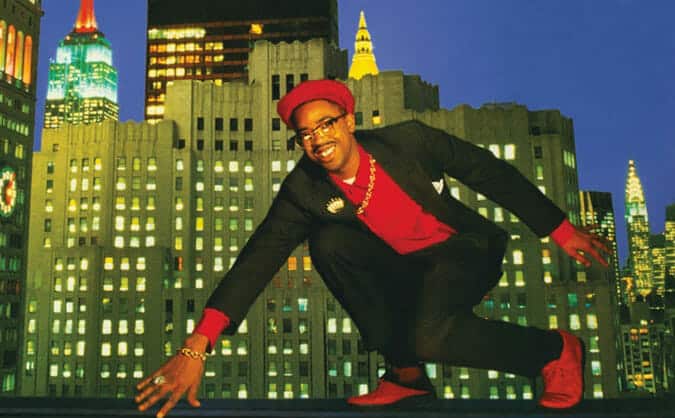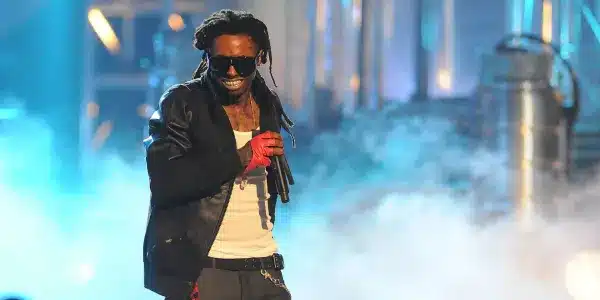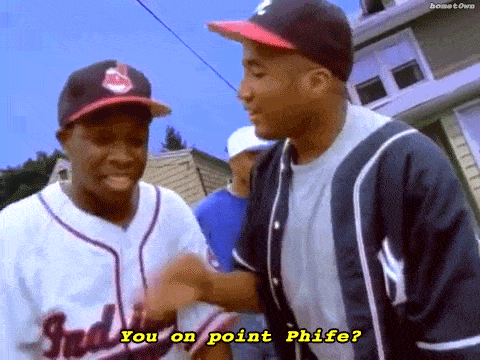On August 11, 1973, Clive Campbell (DJ Kool Herc) and his sister Cindy Campbell held a back-to-school bash in The Bronx, New York. The exact address of the venue was 1520 Sedgewick Ave. On that fateful night, music as we knew it would change forever. Because on this night, Hip-Hop would be introduced to the masses.
Music was being run by disco in the 1970s. That groovy dance style was inescapable. As fast as disco rose to the top, its potential downfall was inevitable. People in the 1970s began to witness disenfranchisement. As a result, the fathers, DJ Kool Herc, Afrika Bambaataa, Grandmaster Flash, and unsung hero Kool DJ AJ gave the youth something to be proud of.
This new sound gave those disenfranchised people an opportunity to use their voices. Over the last half-century, those voices grew louder and prouder. This tradition has seen many face-lifts and will continue to experience change. So what about the recordings that helped hip-hop become a household name? Here are rap’s ten most essential songs.
10. Cardi B – Bodak Yellow

The Oxford Dictionary defines a paradigm shift as “a fundamental change in or underlying assumptions.” Bodak Yellow fits the bill if we go by the first half of this definition. From 2009-2016 the female hip-hop world belonged to Nicki Minaj. With hits like “For Life,” “Starships,” and “Anaconda,” the leader of the Barbs and Kens could do no wrong at this time. On June 16, 2017, things would change with Cardi B’s “Bodak Yellow.” With an impressive flow, sexuality, and braggadocious lyrics, the former reality star hit the rap game hard.
Hip-Hop found another woman that could run with the bulls and give the genre a much-needed shake-up. As of 2021, the single holds a diamond certification from the RIAA. However, it’s a legacy of how the single opened doors for female rappers. That door remains open today. Now, we have a ton of female talents, like Ice Spice, Coi Leray, Megan Thee Stallion, and The City Girls.
9. Slick Rick – Children’s Story
If storytelling were a person, it would undoubtedly be Richard ML Walters of Mitcham, London, England. Going by the stage names “Slick Rick” or “Ricky D,” the MC would run into fellow rapper Doug E. Fresh, and the duo would make hip-hop history in their own right. In 1985 Doug and Rick released songs that helped elevate rap. “The Show” and “La Di Da Di” are regarded as two staples in rap history. But this was only the beginning.

On November 1, 1988, three years after his star-making performance, Rick released his debut album, “The Adventures of Slick Rick.” The record’s three singles have all gone on to reach legendary status. “Teenage Love,” “Hey Young World,” and “Children’s Story” would catapult Ricky D to superstardom. The latter of the three tracks would place Rick in Hip-Hop’s pantheon.
The song depicts a day in the life of a teenager. Vivid details of a robbery, crime, murder, and peer pressure accompany it. Around this time, the discussion about the disenfranchisement of minorities in America within hip-hop was starting. While “Children’s Story” didn’t spearhead the conversation, it played a vital role in expanding its presentation. It helped alter the frame of how messages were delivered in Rap. With its happy-go-lucky, child-like appeal, it got across a message that most rappers spoke about but hadn’t experimented with.
8. Lil Wayne – Lollipop
Which “Carter” album is the best? This has been a conversation among hip-hop faithful for over a decade now. In 2005, Cash Money Records was in an awkward place. The label’s head in-house producer, Mannie Fresh, left the company citing financial disputes. This left the record label without his direction for the first time in seven years. What did they do? They only went outside the company and found the biggest names in music to produce “Tha Carter III.”

On March 13, 2008, Lil Wayne released “Tha Carter III’s” lead single and instantaneously took the crown for best rapper alive. During the mid-2000s, rap was dominated by the efforts of 50 Cents, Twista, and Kanye West. With this release, Lil Wayne put himself at the forefront of music and captured the entire world’s imagination. Also, the phrase “Young Money” was used to death by the rapper at this time. Little did the world know a young man from Toronto would listen in and help the fledgling company become synonymous with rap.
Although Lollipop’s growing success was impressive in 2008, the aftermath surprised the world. Lil Wayne sold 1 million copies of “Tha Carter III” in its first week. The long-lasting impact of the single is that it gave birth to the next generation. Names like Drake, Tyga, Nicki Minaj, and Cory Gunz rose to prominence. Also, this would mark the beginning of the G.O.O.D Music/YMCMB “Rivalry” that dominated the 2010s.
7. A Tribe Called Quest – Check the Rhime
Right around its 18th birthday, hip-hop had already become a global phenomenon. It had extended to the West Coast (more on that later) and had the East Coast vibing to an undefeated sound. But what now? Hasn’t Hip-Hop done enough? What more can they do? A collective of like-minded emcees can unite and create a movement. This movement would counteract the violent turn that rap had taken in the late 1980s. This collective would be known as “The Native Tongue.”

The Jungle Brothers, De La Soul, Queen Latifah, Monie Love, and A Tribe Called Quest all lent their voices to bring positivity to rap. The collective’s 1989 single “Buddy,” set the stage for groups and artists to succeed solo. The group that would take the mantle as the spokespeople for the collective was A Tribe Called Quest.
Their second album, “The Low-End Theory,” contained a song that would become the standard of alternative rap. If one takes jazz, blends it with a funky Linden Blvd flow, and has Tip and Phife dog asking if they’re on point, you should yield a timeless classic. Check The Rhime became the flag bearer for the movement when hip-hop was going through a shift. Think of those who became superstars at the time. Eric B. and Rakim, KRS One, NWA, and Ice Cube (after his split from NWA).
Check The Rhime had something that the tracks of the time didn’t. That is conscious in an otherwise ironic look at life and music.
You can read about what we think is the best album of 2022 here. Also, check out some more of the important rap songs ever here.
6. Wu Tang Clan – C.R.E.A.M
Unlikely and iconic is how, to sum up, the good folks from Staten Island. Just like we mentioned with A Tribe Called Quest, hip-hop was experiencing a cultural shift at the start of the 90s. However, unlike A Tribe Called Quest, the Wu-Tang Clan focused on storytelling based on the Shaolin and Wu-Tang rivalry. By blending different cultures (Asian and Black), it produced a sound that hasn’t been emulated since.

While Wu’s music focuses on tales from the hood, and their own experiences, The RZA (Bobby Diggs) decided to flip the script and focus on pure storytelling. As a result of this decision, the masses were informed about the importance of cash. “Cash Rules Everything Around Me. C.R.E.A.M. get the money. Dolla Dolla Bill, Y’all!” And just like that, C.R.E.A.M was born.
One of the most unorthodox songs ever made, it focuses on the perspective of RaeKwon the Chef (Corey Woods) and Inspectah Deck (Jason Hunter) as they give a grim coming-of-age story. This is one of the only Wu-Tang songs to garner sympathy from its audience by highlighting their childhood struggles and entering adulthood. Lastly, that sweet hook from Method Man (Clifford Smith, Jr.), combined with everyday life on the East Coast, generates a vital hip-hop classic.
5. NWA – Straight Outta Compton
Where to begin with this? Let’s cover the basics. Hip-Hop’s dominance on the East Coast began to outgrow the region. A culture shock would happen if one were to take a trip to California as a rap fan in the mid-80s. It was jheri curls all over the place, roller-skating, and a funky disco-type rapping style. The rap scene on the US West Coast needed some help growing.
What happened next? Well, two ambitious DJs from the World Class Wreckin’ Cru, a street hustler who could have been a Crip, hardcore lyrists, and a high schooler who had a knack for writing. If you mix all of these ingredients, you should get Dr. Dre, DJ Yella, MC Ren, Ice Cube, and Eazy-E. These five men should comprise the Rock-n-Roll Hall of Famers NWA.

The West Coast was experiencing heavy disenfranchisement. Police brutality, unwarranted home invasions, unlawful stop and frisks, and gang warfare. What is there left to do? In the words of O’Shea Jackson, Sr., “be brutally honest.” On July 10, 1988, Jackson’s words would manifest in “Straight Outta Compton.” This song is so important because it gave birth to hardcore gangsta rap. Ironically, that wasn’t the goal. The goal was to tell the truth about their life experiences. How drugs found their way to their neighborhood, death was almost inescapable, and Reganomics.
4. The Notorious B.I.G – Juicy
“Do-or-Die” Bed-Stuy, Brooklyn, New York, was once home to one of the best emcees ever lived! Christopher George Latore Wallace, widely known as The Notorious B.I.G., is regarded as one of the best success stories in modern history. Known for his laid style that Snoop Dogg only rivaled at the time, Big told a semi-autobiographical story in his lyrics. One of his tracks details his journey from the bottom to the top of his profession.
Juicy contains a heavy sample from Mtume’s 1983 smash hit “Juicy Fruit.” With lyrics describing the struggle of the average joe from Brooklyn to his overnight success, “Juicy” was a hit for those who are “common folks.” The rags-to-riches chronicle explains how success is unobtainable in situations. However, it doesn’t say that it’s impossible. Instead, it presents a feel-good vibe and gives joy to its audience.

As fast as Big’s star rose on the back of Juicy, he would not have long to bear the fruit of his labor. On March 9, 1997, following the after-party for that year’s Soul Train Awards, Wallace was shot and killed in a drive-by outside the venue. He was only 24 at the time of his death. Although his Second and final studio album, “Life After Death,” received widespread acclaim, without taking Juicy to the radio, Hip-Hop could have and still look different by today’s standards.
3. 2Pac – Brenda’s Got a Baby
We must start by saying deciding which song from Pac was important was difficult. Ultimately, we settled on 1991’s “Brenda’s Got a Baby. Yes, this entry may be controversial, so, as a make-good, we’ll shout out “Dear Mama” and “Changes.” Here’s why Brenda’s Got a Baby beats the other two songs. While Changes discusses social issues, it had already been a lot to that point. Dear Mama was among the first to pay homage to women that have given birth and experienced single parenting.
However, Brenda’s Got a Baby brings to light teenage pregnancy for the first time in modern culture. While teenage isn’t as frowned upon as long ago, it still began a conversation that most entertainers often ignore.

2Pac was the first to add to social issues by not just openly discussing the trials and tribulations of Black Culture; he added a new wrinkle. In the 18th Century, musicians often protested through well their music. So the tradition of protests and politically charged music had always existed. Over time, others put their spin on issues to the music. The only point missing by 1991 was the unsettling of teenage pregnancy; and how it affects the black community.
In Brenda’s Got a Baby, the world seems to have themes of abuse, sexual assault, and welfare. The baby is more of a metaphor for how these things play a role in unplanned/unwanted pregnancies. It’s some of this, some of that meets a warranted nor planned consequence. And that the cycle, if not properly managed, can repeat.
2. The Sugarhill Gang – Rapper’s Delight
We’ve arrived at the most controversial spots on our list. While we have some explaining, we ultimately went with this order for reasons concerning the overall messages the songs get across. Rapper’s Delight broke ground by becoming the first crossover rap song. By the time Hip-Hop was 6, it had already gathered a large following. It was time to see what the four fathers made and for it to receive global attention.

Sylvia Roberts (1935-2011) was the head of Sugar Hill Records along with her husband, Joseph Robinson. At the time, Hip-Hop was known as B-Boy (or break music). Break Music focused on the drum break of the song. The couple noticed hip-hop’s potential and found a group of men who put the genre into another stratosphere.
Wonder Mike, Master Gee, and Big Bank Hank (1956-2014) were assembled to form The Sugarhill Gang. The rest, as they say, is history. The trio recorded a nearly 15-minute track that would forge the direction of Hip-Hop. “Rapper’s Delight” is a controversial record in its own right. While most praise the song’s impact by considering the crossover success, others scorn the record. It did little to show the struggles and anger Black America was feeling. Despite the criticism over the years, it has become iconic since its release.
1. Grandmaster Flash & The Furious 5 – The Message

“Don’t Push Me, Cause I’m Close to the Edge!” that iconic land would land this legendary group in the Rock-n-Roll Hall of Fame. If you hadn’t noticed, “The Message” is Rap’s Most Important Song ever. For the first time in the genre’s history, fans got a look into inner-city life. What they all saw was the furthest thing from pretty. At the time, Sugarhill Records saw a spike in competition as Def Jam was founded two years later.
The first of its kind, The Message took hip-hop away from its dance party roots and placed it on the social platform. It summarizes why urban things are the way they are, and that life is nowhere near a fairytale. To that point, rap had only been used as a means of dancing. The Message changes the genre and builds on the foundation of Rapper’s Delight. With hip-hop going mainstream in 1979, the first authentic hip-hop song didn’t happen until The Message in 1982.














